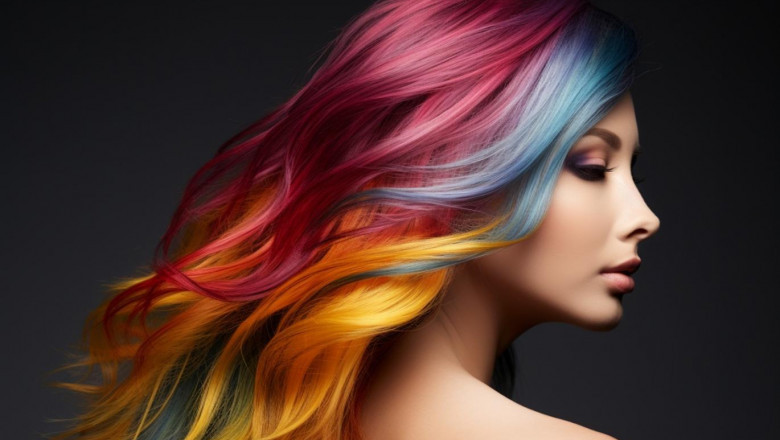views
The hair colour market has evolved significantly over the past few decades. Once dominated by a narrow range of products and used mainly for grey coverage, it now thrives as a dynamic and fashion-forward industry. With rising awareness of personal grooming, changing fashion trends, and the influence of social media, the global hair colour market is experiencing sustained growth across all demographics.
Market Overview
The global hair colour market was valued at over USD 23 billion in 2024 and is projected to grow at a compound annual growth rate (CAGR) of around 5.8% through 2030. North America and Europe hold substantial market shares, but rapid urbanization and increasing disposable incomes are propelling growth in Asia-Pacific and Latin America.
Hair colour products are broadly categorized into permanent, semi-permanent, temporary, and highlights/bleach. Permanent hair colour remains the most popular category due to its lasting effects, while temporary colours have gained popularity among younger consumers for their ease of use and experimental appeal.
Key Drivers of Market Growth
One of the key growth drivers of the hair colour market is the expanding influence of social media and celebrity culture. Platforms like Instagram and TikTok allow trends to emerge and spread rapidly, encouraging younger consumers to experiment with vibrant and unconventional hair shades. This demand has led to a boom in fantasy colours such as blue, pink, and green.
Another significant driver is the aging global population. With more individuals over the age of 40 seeking to cover grey hair, the demand for natural-looking, long-lasting hair dyes has surged. Additionally, the rise in male grooming has opened new market segments, with more men embracing hair colour products than ever before.
Consumer Preferences and Innovation
Consumers today are increasingly drawn to products with clean labels, organic ingredients, and minimal chemical content. As a result, brands are developing ammonia-free, vegan, and paraben-free formulations. Natural hair dyes, particularly those derived from henna, indigo, and herbal extracts, are also gaining traction, especially among health-conscious consumers.
Technological innovation plays a key role in shaping the hair colour industry. Smart hair colouring kits, personalised colour recommendations using AI, and augmented reality apps for virtual try-ons have elevated the consumer experience, bridging the gap between digital and physical retail.
Regional Insights
In North America, the U.S. remains a dominant player, with growing diversity driving demand for multicultural hair care and colour products. European countries, especially France, Germany, and the UK, are known for their long-standing affinity toward premium hair colour brands and salon services.
The Asia-Pacific region, particularly India, China, and Japan, presents a massive untapped potential. Rising income levels, increasing awareness of global beauty trends, and a youthful population make it a hotbed for market expansion. Meanwhile, Latin America and the Middle East are also witnessing increased adoption of at-home colouring products, driven by affordability and accessibility.
Challenges and Opportunities
Despite its robust growth, the hair colour market faces several challenges. Concerns over allergic reactions and long-term chemical exposure are prompting scrutiny over product formulations. Additionally, the global supply chain disruptions and inflationary pressures on raw materials have impacted manufacturing costs and pricing strategies.
Nonetheless, opportunities abound. The rise of e-commerce platforms has allowed even niche and indie brands to access a global audience. Collaborations with influencers, targeted digital marketing, and subscription-based models have proven successful in engaging and retaining customers.
Sustainability is another promising frontier. As consumers become more environmentally conscious, brands that prioritize eco-friendly packaging, cruelty-free testing, and ethical sourcing of ingredients are gaining a competitive edge.
Future Outlook
The hair colour market is poised for steady growth, driven by innovation, demographic shifts, and evolving beauty standards. As consumers continue to seek personalization, safety, and sustainability in their hair care choices, the industry must adapt with responsive strategies and inclusive offerings.
In the coming years, expect to see more hybrid products that combine colour with conditioning benefits, AI-powered at-home kits, and an even greater push toward gender-neutral and inclusive marketing. The hair colour market, once a niche beauty category, is now a vibrant landscape reflecting the intersection of culture, technology, and self-expression.






















Comments
0 comment